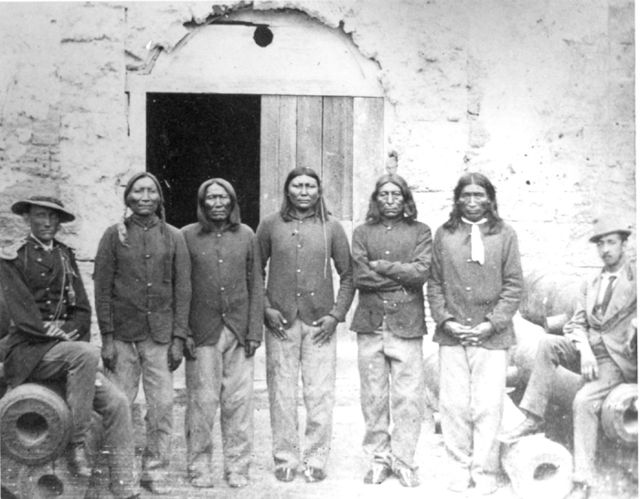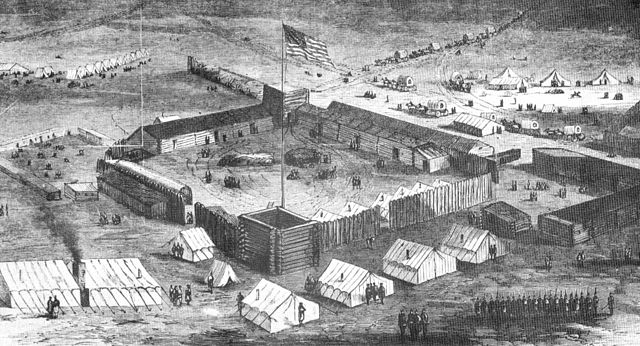The Red River War was a military campaign launched by the United States Army in 1874 to displace the Comanche, Kiowa, Southern Cheyenne, and Arapaho tribes from the Southern Plains, and forcibly relocate the tribes to reservations in Indian Territory. The war had several army columns crisscross the Texas Panhandle in an effort to locate, harass, and capture nomadic Native American bands. Most of the engagements were small skirmishes with few casualties on either side. The war wound down over the last few months of 1874, as fewer and fewer Indian bands had the strength and supplies to remain in the field. Though the last significantly sized group did not surrender until mid-1875, the war marked the end of free-roaming Indian populations on the southern Great Plains.
A Kiowa ledger drawing possibly depicting the Battle of Buffalo Wallow in 1874, one of several clashes between Southern Plains Indians and the U.S. Army during the Red River War.
Native American prisoners of the Red River War, Fort Marion, Florida 1875: The inscription on the back of the original stereograph says: L to R:Lone Wolf, Double Vision, White Horse, Woman's Heart, Mamante - Kiowas. Officer left is Capt. Richard H. Pratt
Camp Supply Stockade, Harper's Weekly, February 1869.
Rugged terrain of the Palo Duro Canyon
The Comanche or Nʉmʉnʉʉ is a Native American tribe from the Southern Plains of the present-day United States. Comanche people today belong to the federally recognized Comanche Nation, headquartered in Lawton, Oklahoma.
Comanches watching an American caravan in West Texas, 1850, by the US Army officer, Arthur Lee
Comanche warriors, c. 1867–1874
Quanah Parker, prominent chief of the Comanche Indians with a feather fan; photo by James Mooney, 1892
Mac Silverhorn (Comanche), grandson of Silver Horn, drumming with friend at Redstone Baptist Church








